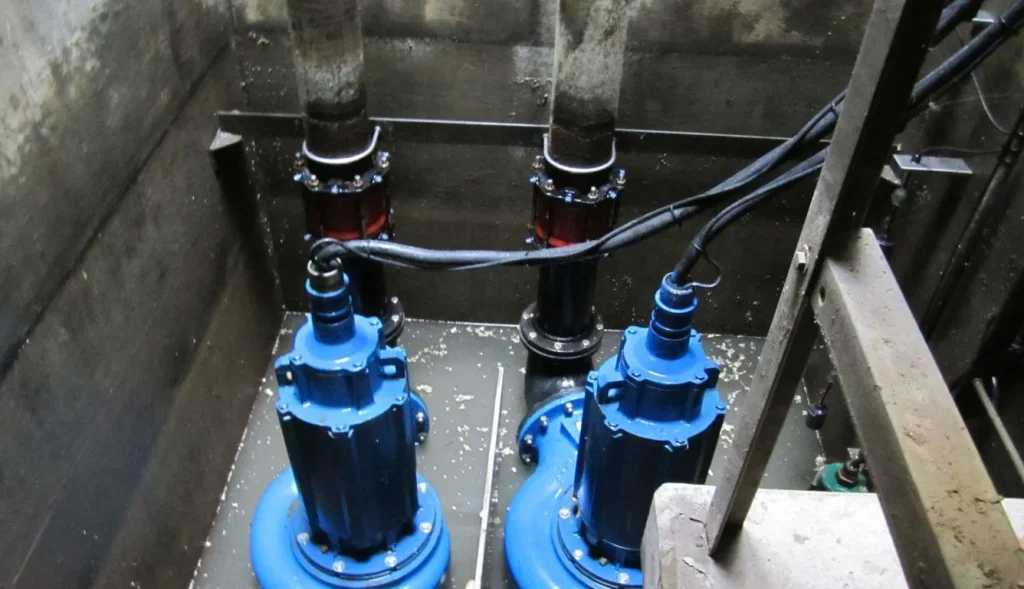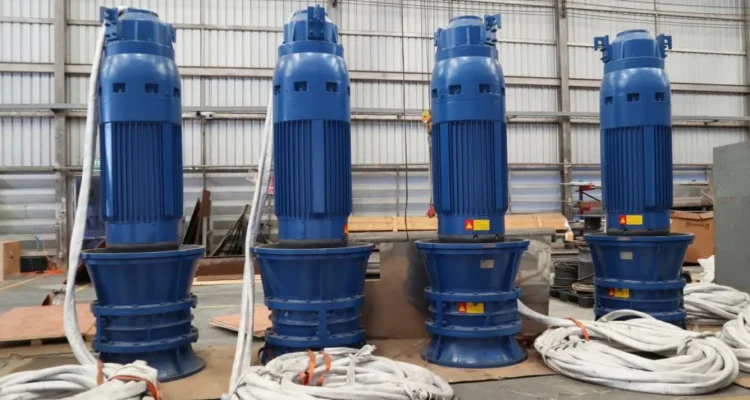What is a Submersible Pump?
Submersible pumps, as the name suggests, are designed to operate while fully submerged in liquid. They are highly effective in pumping water or other fluids from deep sources, such as wells, tanks, or sumps. These pumps are encased in a hermetically sealed motor, ensuring that no water enters the internal components, making them highly efficient and versatile.

Importance and Uses of Submersible Pumps
Submersible pumps play a crucial role in many sectors, from household water supply to industrial and agricultural applications. They are commonly used in wells to provide drinking water, drainage systems to remove water from basements, and in agriculture to pump water for irrigation. The versatility of submersible pumps makes them indispensable in environments that require the movement of water from a low point to a higher elevation.
How Does a Submersible Pump Work?
Submersible pumps work by pushing water to the surface rather than pulling it, which gives them a significant efficiency advantage over other pump types. The motor, encased in a waterproof seal, drives the impeller, which creates pressure and moves the water through pipes.
Submersible vs. Non-Submersible Pumps
The key difference between submersible and non-submersible pumps is their operating environment. Submersible pumps work underwater, while non-submersible pumps are installed above ground and rely on suction to draw water upward. Submersible pumps tend to be more efficient, as they avoid the problem of cavitation, which can occur when air pockets form in non-submersible systems.
Types of Submersible Pumps
Single-Stage Submersible Pumps
These are ideal for shallow applications, such as residential water wells or drainage.
Multi-Stage Submersible Pumps
Typically used in deep wells, multi-stage pumps have several impellers, which enable them to push water to greater heights.
Well Submersible Pumps
These pumps are designed for deep wells and provide reliable water delivery from underground sources.
Sewage and Sump Submersible Pumps
Designed to handle wastewater, these pumps are used in homes or industries to drain dirty water, often found in basements or treatment plants.
Key Components of a Submersible Pump
Motor
The motor powers the impeller and is housed within the pump’s waterproof casing to prevent water damage.
Impeller
This component moves the water by generating the pressure needed to push it through the system.
Seals and Casing
The seals and casing keep the motor and internal components dry, preventing malfunctions caused by water intrusion.
Advantages of Submersible Pumps
Efficiency and Energy Saving
Submersible pumps require less energy to operate since they push water instead of pulling it, reducing strain on the system.
No Need for Priming
Unlike other pump types, submersible pumps do not require priming, making them easier to operate.
Space-Saving Design
Their compact design allows for installation in tight spaces like narrow wells.
Quiet Operation
Because they operate underwater, submersible pumps are much quieter than above-ground pumps.
Disadvantages of Submersible Pumps
Maintenance Challenges
Accessing the pump for maintenance can be challenging, especially if it is installed deep in a well or tank.
Sealing Issues
Over time, the seals on a submersible pump can wear out, leading to water leakage into the motor, which can cause the pump to fail.
Limited Application Depth
Certain submersible pumps are limited by how deep they can operate effectively, making them less suitable for extremely deep wells.
Applications of Submersible Pumps
Residential Use: Wells and Sump Pumps
Submersible pumps are a popular choice for residential water wells and basement sump systems.
Industrial Use: Wastewater Management
Industries use submersible pumps for wastewater management, removing dirty or contaminated water efficiently.
Agricultural Use: Irrigation Systems
Farmers rely on submersible pumps to move water for irrigation, ensuring crops receive the necessary hydration.
How to Choose the Right Submersible Pump
Flow Rate and Pressure
Consider the required flow rate and pressure for your application, as different pumps cater to different needs.
Material and Durability
Ensure the pump is made from corrosion-resistant materials, especially if it will be exposed to chemicals or saltwater.
Power Requirements
Ensure the pump’s power rating is suitable for your power supply and the task at hand.
Installation Process for Submersible Pumps
Proper installation is critical for the pump’s performance and longevity. Follow manufacturer guidelines carefully, ensuring the pump is submerged fully and electrical connections are secure.
Common Mistakes to Avoid
- Failing to check power compatibility.
- Not securing the pump properly, leading to malfunction.
- Skipping regular maintenance, which can shorten the pump’s lifespan.
Maintenance and Care Tips
Regular inspections help prevent costly repairs. Clean the pump’s impeller regularly and ensure the seals remain watertight.
Submersible Pump vs. Jet Pump
Efficiency Comparison
Submersible pumps are generally more efficient because they push water rather than pulling it, reducing energy loss.
Cost and Installation Differences
While submersible pumps tend to have higher upfront costs, their efficiency and durability often result in lower long-term operating costs compared to jet pumps.
Submersible Pump Safety Tips
Electrical Safety Considerations
Always ensure electrical connections are waterproof and grounded properly to prevent electric shock.
Handling and Operation Precautions
Avoid running the pump dry, as this can damage the motor. Also, ensure the pump is appropriately sized for the task to prevent overloading.
Environmental Impact of Submersible Pumps
Submersible pumps are energy-efficient and help conserve water, especially in agricultural and industrial applications where water management is crucial.
Cost Factors and Budget Considerations
Initial Purchase Cost
The cost of a submersible pump varies depending on its size, power, and application.
Long-Term Operating Costs
While these pumps may have a higher initial cost, they often result in lower energy bills and reduced maintenance costs.
FAQs
1. What is the lifespan of a submersible pump?
A well-maintained submersible pump can last between 8 to 15 years.
2. Can a submersible pump run dry?
No, running a submersible pump dry can damage the motor.
3. How deep can a submersible pump go?
Submersible pumps can typically operate at depths of up to 400 feet, depending on the model.
4. What are the signs that a submersible pump needs replacement?
Signs include reduced water pressure, unusual noises, or frequent tripping of circuit breakers.
5. Are submersible pumps noisy?
No, they are much quieter than above-ground pumps due to their underwater operation.

Conclusion
Submersible pumps are versatile, efficient, and widely used across various industries and homes. Whether you’re looking to draw water from a deep well, manage wastewater, or irrigate crops, these pumps provide a reliable solution. Despite some challenges, like maintenance and seal wear, their benefits far outweigh the drawbacks.


Congratulation!